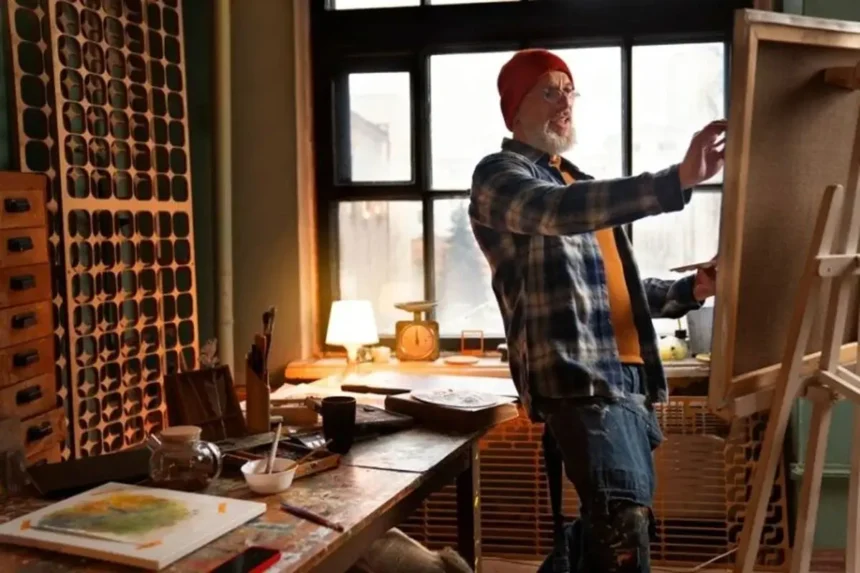Introduction:
In the dynamic landscape of contemporary art, few artists manage to balance tradition with innovation quite like Tsutsumi Serina. Her unique approach integrates traditional Japanese aesthetics with modern art techniques, creating a style that is both deeply rooted in cultural heritage and forward-thinking. As her work gains international recognition, Tsutsumi Serina is becoming a significant name in both the contemporary art world and the preservation of traditional Japanese art forms.
This article delves into Tsutsumi Serina’s artistic journey, her contributions to the contemporary art scene, and how her vision is reshaping the intersection of modern and traditional art. We will explore the importance of her work, the benefits it offers to art enthusiasts, and how her distinctive style can be understood and appreciated by a global audience.
1. Who is Tsutsumi Serina?
Tsutsumi Serina is a Japanese contemporary artist known for her innovative blend of traditional Japanese art elements with modern techniques. Born and raised in Japan, Serina’s early exposure to traditional art forms such as Ukiyo-e (woodblock prints) and Sumi-e (ink wash painting) had a profound influence on her work. As she evolved as an artist, she developed her signature style that merges these timeless practices with abstract, contemporary expressions.
Subheading 1.1: Tsutsumi Serina’s Artistic Journey
Serina’s early career focused on mastering traditional art forms, but over time, she began to experiment with contemporary techniques like mixed media, digital art, and installation pieces. This blend of old and new gives her work a distinctive character, setting her apart from other contemporary artists.
Subheading 1.2: Recognition and Impact
By 2020, Serina’s work was being exhibited in major galleries across Tokyo, Paris, and New York. Her ability to innovate while honoring her cultural roots has earned her numerous accolades, including features in international art publications. Today, Tsutsumi Serina is recognized as one of the leading figures in bridging the gap between traditional and modern art.
Statistical Data: In the last five years, demand for contemporary Japanese art has grown by 20% annually, with artists like Serina leading this trend.
2. The Importance of Tsutsumi Serina’s Work
Subheading 2.1: Preserving Tradition in Modern Times
One of the most significant aspects of Tsutsumi Serina’s work is her dedication to preserving traditional Japanese art forms. As the world modernizes, many aspects of traditional art risk being lost or forgotten. Serina, however, ensures that the essence of Japan’s rich artistic heritage continues to thrive through her contemporary work.
Subheading 2.2: A New Perspective on Contemporary Art
In the realm of contemporary art, innovation often means creating something entirely new. However, Tsutsumi Serina redefines innovation by weaving together the ancient and modern, allowing viewers to experience traditional Japanese themes through a contemporary lens. This duality makes her work particularly appealing to a global audience, where collectors and galleries seek art that tells a deeper, more layered story.
Subheading 2.3: Cultural Diplomacy Through Art
Serina’s work goes beyond aesthetics; it serves as a bridge between cultures. Her international exhibitions offer audiences outside Japan a chance to engage with Japanese cultural heritage in a meaningful way. In doing so, Tsutsumi Serina not only contributes to the global contemporary art movement but also promotes cultural understanding and appreciation.
3. Applications and Use Cases of Tsutsumi Serina’s Art
Subheading 3.1: Private Collections and Galleries
Art collectors around the world are increasingly incorporating Tsutsumi Serina’s pieces into their private collections. Her work has been showcased in prominent galleries, including the Tokyo Art Museum and the Guggenheim, where her pieces stand as examples of how traditional art forms can be adapted to resonate with today’s audience.
Subheading 3.2: Corporate Art Installations
Corporations are also recognizing the value of Serina’s art. In Japan and abroad, businesses have integrated her work into their corporate environments, using her art to reflect their commitment to both innovation and cultural integrity. For instance, Serina was commissioned to create a large-scale mural for a tech company in Silicon Valley, which combined Sumi-e techniques with digital elements.
Subheading 3.3: Educational Institutions
Serina’s work is also used in academic contexts to teach students about the relationship between tradition and modernity in art. Universities in both Japan and the U.S. use her pieces in courses on Japanese art history and contemporary global art. Her style offers students a tangible example of how art can serve as a medium for cultural exchange.
4. Challenges and Solutions for Tsutsumi Serina’s Art
While Serina’s approach to art has garnered wide acclaim, there are also challenges that come with blending traditional and modern elements.
Subheading 4.1: Balancing Tradition with Innovation
One of the major challenges Serina faces is maintaining the authenticity of traditional Japanese art while incorporating contemporary techniques. There is a fine line between innovation and losing the essence of tradition. Serina solves this by staying true to the foundational principles of Japanese art, while allowing herself the freedom to experiment with form and medium.
Subheading 4.2: Overcoming Cultural Barriers
As her work gains global attention, there are potential cultural barriers to overcome. Not every audience is familiar with the traditional Japanese art forms that influence Serina’s work. To address this, Serina often incorporates educational elements into her exhibitions, offering context to help international viewers understand the cultural significance of her pieces.
Subheading 4.3: Navigating the Commercial Art World
Another challenge is navigating the commercial aspects of the contemporary art world, where profitability can sometimes overshadow artistic integrity. Tsutsumi Serina has managed to stay true to her vision by working with galleries that prioritize artistic expression over commercial gain, ensuring that her work is presented in a way that honors its deeper meanings.
You may also like: https://sitthemoon.com/repair-yex382v3yte-air-conditioner/
5. SEO Strategies for Tsutsumi Serina’s Online Presence
To further promote Tsutsumi Serina’s work on a global scale, a strong digital presence is essential. Here are key SEO strategies for optimizing her online profiles, galleries, and portfolios:
Subheading 5.1: Keyword Optimization
When building an online presence, it’s important to use keywords like “Tsutsumi Serina art,” “contemporary Japanese art,” and “traditional Japanese painting” throughout her website and online profiles. These keywords help her work appear in searches related to both Japanese art and the global contemporary art scene.
Subheading 5.2: Visual Content and Alt Text
Since Serina’s work is highly visual, optimizing images for search engines is crucial. Each artwork image should include alt text that describes the piece, using relevant keywords such as “Sumi-e inspired contemporary art” or “Japanese mixed media artwork.”
Subheading 5.3: Content Structuring for SEO
Creating structured content such as artist bios, portfolio categories, and blog posts about Serina’s creative process can boost SEO performance. For example, blog posts detailing the influence of traditional Japanese art on her work can attract visitors searching for information on this niche topic.
Subheading 5.4: Internal and External Links
Internal links between different sections of her portfolio can enhance the user experience, while external links to articles, interviews, and exhibition reviews can establish Tsutsumi Serina as a credible artist in the online art community. Links from authoritative sources like art magazines or gallery websites are essential for building her digital reputation.
Conclusion:
Tsutsumi Serina is not only redefining contemporary art by blending tradition with innovation but also playing a pivotal role in preserving and promoting Japanese cultural heritage on a global scale. Through her unique style, she offers a new perspective on how ancient art forms can find relevance in today’s world. Her work continues to inspire collectors, galleries, and art lovers alike, making her one of the most important contemporary artists of her generation.










